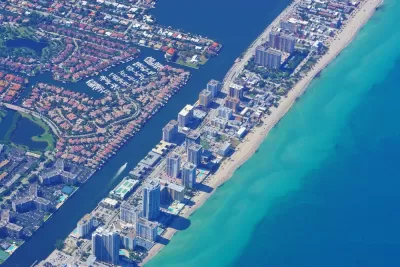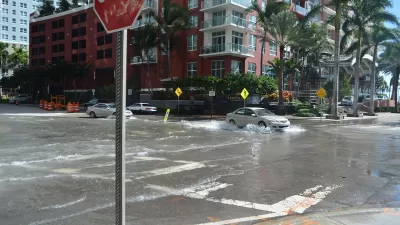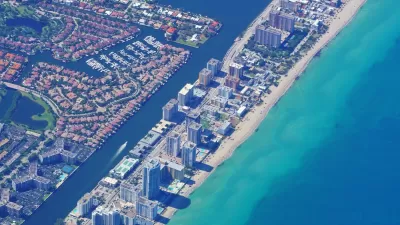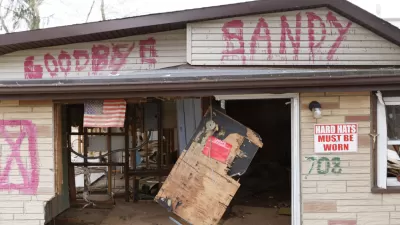A climate change conference in Southeast Florida this week delivers bad news for communities on the coast in South Florida and in the Florida Keys. Some of those communities won't be saved as the receipts for climate change come in.

"The sea rise curves unveiled Wednesday at the Southeast Florida Climate Leadership Summit in Key West tack on about three to five extra inches by 2060, and that number only gets bigger in the future," reports Alex Harris for the Miami Herald.
"The region went from expecting between 14 and 26 inches of sea level rise by 2060 — commonly shortened to two feet by 2060 by local leaders — to predicting 17 to 31 inches of sea rise," according to Harris.
While Harris characterizes that news as not "catastrophically different than previous years," the focus of this article is on South Florida.
In an article by Christopher Flavelle and Patricia Mazzei for the New York Times, the news for communities in the Florida Keys is less diplomatic. Sea level rise is an existential threat, according to a report focusing on Sugarloaf Key, a small island 15 miles up Highway 1 from Key West, and released at the same event this week.
To keep those three miles of road dry year-round in 2025 would require raising it by 1.3 feet, at a cost of $75 million, or $25 million per mile. Keeping the road dry in 2045 would mean elevating it 2.2 feet, at a cost of $128 million. To protect against expected flooding levels in 2060, the cost would jump to $181 million.
And all that to protect about two dozen homes.
The larger, ethical questions raised by the report are debated in the article, and it's clear that decisions about who's property, and where, gets saved, will need to be made sooner than anyone anticipated.
FULL STORY: New projections show that South Florida is in for even more sea level rise

Alabama: Trump Terminates Settlements for Black Communities Harmed By Raw Sewage
Trump deemed the landmark civil rights agreement “illegal DEI and environmental justice policy.”

Study: Maui’s Plan to Convert Vacation Rentals to Long-Term Housing Could Cause Nearly $1 Billion Economic Loss
The plan would reduce visitor accommodation by 25% resulting in 1,900 jobs lost.

Why Should We Subsidize Public Transportation?
Many public transit agencies face financial stress due to rising costs, declining fare revenue, and declining subsidies. Transit advocates must provide a strong business case for increasing public transit funding.

Paris Bike Boom Leads to Steep Drop in Air Pollution
The French city’s air quality has improved dramatically in the past 20 years, coinciding with a growth in cycling.

Why Housing Costs More to Build in California Than in Texas
Hard costs like labor and materials combined with ‘soft’ costs such as permitting make building in the San Francisco Bay Area almost three times as costly as in Texas cities.

San Diego County Sees a Rise in Urban Coyotes
San Diego County experiences a rise in urban coyotes, as sightings become prevalent throughout its urban neighbourhoods and surrounding areas.
Urban Design for Planners 1: Software Tools
This six-course series explores essential urban design concepts using open source software and equips planners with the tools they need to participate fully in the urban design process.
Planning for Universal Design
Learn the tools for implementing Universal Design in planning regulations.
Smith Gee Studio
Alamo Area Metropolitan Planning Organization
City of Santa Clarita
Institute for Housing and Urban Development Studies (IHS)
City of Grandview
Harvard GSD Executive Education
Toledo-Lucas County Plan Commissions
Salt Lake City
NYU Wagner Graduate School of Public Service





























